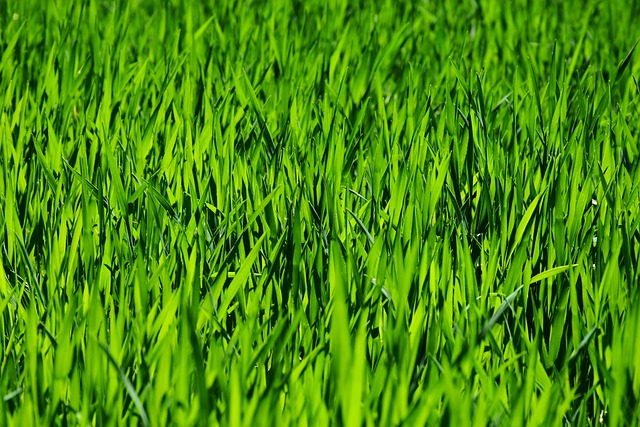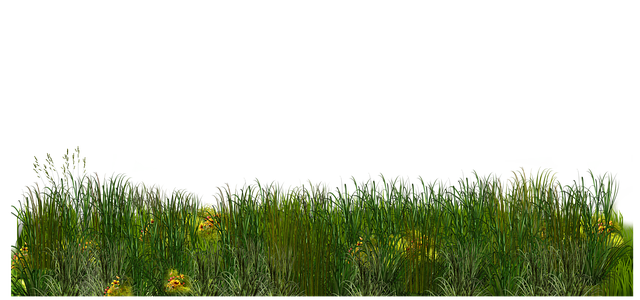Effective lawn care and landscaping are essential for maintaining a vibrant and healthy outdoor space. A robust lawn requires regular mowing at the right height for your grass type, efficient irrigation tailored to local weather and your grass's needs, and periodic aeration to improve soil health. Fertilization should be specific to your turfgrass's nutritional requirements, supporting overall plant health and contributing to a dense turf that naturally suppresses weeds. Understanding and adjusting your soil's composition and pH balance is also crucial, as it affects nutrient and water uptake for your plants. Soil preparation should aim for a mix of clay, silt, and sand that promotes healthy root growth and protects against erosion or waterlogging, with an optimal pH range of 6.0-7.5 for most lawns. Regular evaluation of soil health through testing kits or professional services is important for informed maintenance decisions. By implementing a combination of these practices, you can achieve a lush, green garden that is both aesthetically pleasing and a testament to your dedication to lawn care and landscaping. Professional guidance can help tailor these strategies to the specific needs of your garden for consistent plant health throughout the year.
Embark on a journey through the lush greens and vibrant blooms with our comprehensive guide on garden maintenance and beautification. This article is your manual for mastering lawn care and landscaping, ensuring your garden not only thrives but also becomes an outdoor sanctuary reflecting both your personal aesthetic and environmental stewardship. From essential lawn care practices that nurture a healthy soil foundation to thoughtful design strategies that enhance your home’s curb appeal, we’ll cover it all. Dive into the art of optimizing plant selection based on sunlight exposure, crafting visual compositions with diverse textures and heights, and integrating native plants for a sustainable ecosystem. With actionable tips for seasonal maintenance, organic pest control, and striking garden features, your garden will become the envy of the neighborhood while fostering a biodiverse habitat. Whether you’re a novice gardener or a seasoned landscaper, this guide promises to elevate your gardening skills and transform your outdoor spaces into a lush retreat.
- Essential Lawn Care Practices for a Thriving Garden
- 1. Understanding Soil Composition and pH Levels
- 2. The Role of Aeration and Fertilization in Plant Health
Essential Lawn Care Practices for a Thriving Garden

Engaging in regular lawn care practices is pivotal for cultivating a lush, thriving garden. A well-maintained lawn serves as the foundation of any landscape, setting the visual tone for the entire outdoor space. To achieve this, consistent mowing at the right height for your grass type is essential, as it encourages healthy growth and root development. This practice also helps to prevent weeds from taking over by maintaining an optimal density of desirable turfgrass species.
In addition to regular mowing, proper irrigation is a cornerstone of lawn care and landscaping. Understanding the hydration needs of your grass and local climate conditions allows for efficient water usage, which not only conserves water but also promotes a more resilient and robust lawn. Aerating the lawn periodically to allow air, water, and nutrients to penetrate the soil and reach the roots is another important practice. Complement these techniques with fertilization tailored to your grass type’s requirements, ensuring that it receives the necessary nutrients throughout the growing season. By implementing these essential lawn care practices, you can create a verdant and inviting garden that not only adds beauty to your property but also enhances the overall health of your landscape. Regular upkeep through diligent mowing, watering, aerating, and fertilizing will reward you with a lush, green space that stands as a testament to careful planning and consistent effort in lawn care and landscaping.
1. Understanding Soil Composition and pH Levels

A thriving garden or a lush lawn requires a solid foundation, which is often overlooked but crucial for plant health: the soil composition and pH levels. Soil serves as the medium through which plants absorb nutrients and water, making its makeup a determining factor in the success of your landscaping endeavors. For lawn care specifically, understanding the soil’s texture, structure, and fertility is key. Soil composition varies widely, with factors such as clay, silt, and sand influencing drainage and nutrient retention. A balanced mix supports root growth and helps prevent erosion or waterlogging. Additionally, pH levels are a critical component of soil health, affecting the availability of essential nutrients. Most plants prefer a slightly acidic to neutral pH, with values between 6.0 and 7.5 being optimal for lawn care. Adjusting soil pH can be achieved through the strategic application of lime to raise or sulfur to lower the pH, ensuring that your lawn’s roots can efficiently take up the necessary nutrients for a vibrant appearance. Regular testing of soil composition and pH levels with a kit or professional service can guide lawn care maintenance and landscaping choices, leading to a more resilient and beautiful outdoor space. Maintaining healthy soil is not just about immediate aesthetics; it’s an investment in the long-term health and vitality of your garden or lawn.
2. The Role of Aeration and Fertilization in Plant Health

Engaging in regular lawn care and landscaping practices is pivotal for nurturing a verdant and thriving garden. A key aspect of this care involves aeration and fertilization, which play significant roles in enhancing plant health. Aeration, the process of creating holes or tunnels in the soil to allow air, water, and nutrients to penetrate the grass roots, is essential for addressing soil compaction. This enables the roots to grow deeply and produce a more robust and sustainable lawn. The timing and frequency of aeration can vary depending on local climate conditions and soil type, but it generally benefits from being performed during the spring or fall when the grass is growing vigorously.
Fertilization complements aeration by providing the necessary nutrients that support plant growth and overall health. A well-planned fertilization schedule ensures that plants receive the correct balance of macronutrients such as nitrogen, phosphorus, and potassium, which are critical for photosynthesis, root development, and flower or fruit production, respectively. Organic fertilizers can be particularly beneficial as they introduce beneficial microorganisms into the soil, further improving its structure and fertility. Combined with proper aeration, fertilization enhances the soil’s ability to support plant life, leading to a more vibrant and resilient landscape that is both aesthetically pleasing and environmentally sound. Landscaping professionals can tailor these practices to suit the specific needs of your garden, ensuring optimal plant health throughout the year.
Effective lawn care and landscaping practices are pivotal for maintaining a vibrant garden. By implementing key strategies such as comprehending soil composition and managing pH levels, along with the timely application of aeration and fertilization, gardens can thrive. These actions not only enhance the aesthetic appeal but also promote plant health and resilience. Gardeners are encouraged to adopt these methods to cultivate a lush, inviting outdoor space that reflects the dedication to landscaping excellence. With consistent care and attention, any garden can become a sanctuary of beauty and tranquility, reflecting the harmony between thoughtful maintenance and nature’s bounty.
